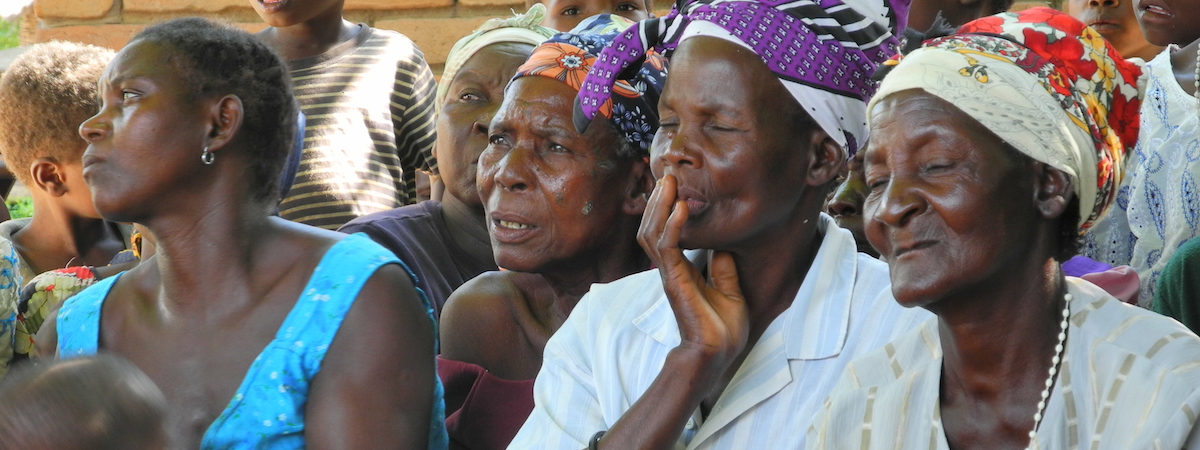
National Adaptation Programmes of Action (NAPAs) provide a process for Least Developed Countries (LDCs) to identify priority activities that respond to their immediate needs to adapt to climate change, ultimately leading to the implementation of projects aimed at reducing the economic and social costs of climate change.
Malawi is vulnerable to climate change and extreme weather events (EAD, 1998, 2002a, 2004). The Vulnerability and Adaptation Assessment Report of 2001 (EAD, 2002b) has clearly indicated that Malawi is experiencing a variety of climatic hazards, which include intense rainfall, floods, seasonal droughts, multi-year droughts, dry spells, cold spells, strong winds, thunderstorms, landslides, hailstorms, mudslides and heat waves, among many others.
- National
- Country Office
- National Governments
Through improved capacity building and project identification, government agencies and other actors will increase their abilities to insulate at risk urban and rural populations from the adverse effects of climate change.
- Department of Climate Change and Meteorological Services, Government of Malawi
- United Nations Development Programme (UNDP)
- Global Environment Facility (GEF)
- Department of Disaster Management Affairs, Government of Malawi
Climate Related Hazards
- Flooding (flash)
- Drought and low flows
- Windstorms
- Intense rainfall
- Dry/cold spells
- Heat waves
- Thunderstorms
- Hailstorms
- Mudslides
Main Human Vulnerabilities and Livelihood Impacts
- Reduced agricultural production
- Water shortage and/or groundwater depletion
- Increased disease and/or other health problems
- Food security
- Water pollution
- Displacement of people
Currently, the majority of rural communities are experiencing chronic food deficits in many parts of the country on a year-round-basis owing to the effects of floods and droughts. This situation has been compounded by the high prevalence of HIV/AIDS that has created a large number of dependant orphans, and has also adversely impacted on rural household food production systems, as well as the quality of life and sustainable livelihoods.
The increasing prevalence of the recurrent floods and droughts is of major concern to the Government of Malawi because of their far-reaching consequences on food, water, health and energy. Erratic rains have resulted in acute crop failure, despite concerted efforts to improve seasonal weather forecasting at the beginning of the rainy season. Crop failure has resulted in food insecurity and malnutrition, especially among vulnerable rural communities. On the other hand, floods have resulted in the disruption of hydroelectric power generation, water pollution, and increased incidences of diseases, such as malaria, cholera and diarrhea. It is against this background that the government has put in place several policies and strategies to address the adverse impacts of climate change on food, water, health and energy, as articulated in Vision 2020, MPRSP, and the Malawi Economic Growth Strategy (MEGS), among many other documents.
Key Adaptation Needs
The most vulnerable areas to floods are the lakeshore plains and lower Shire valley whereas droughts affect all parts of Malawi. Severe droughts occurred in 1915, 1948, 1992 and 1995, whereas recent floods occurred in 2000 and 2001. People living near riverbanks are the most vulnerable to floods, which results in untimely deaths, disease outbreaks, and the destruction of crops and property. During drought years, many people, especially children and the elderly, suffer from malnutrition and are easily attacked by various types of diseases. Livestock and wild animals are equally adversely affected by droughts.
In most parts of Malawi, rural communities have tried to devise ingenious ways to cope with and adapt to the adverse impacts of extreme weather events, including shifting homes to higher ground, storing grain in local granaries, hunting small animals, gathering and eating wild fruits and vegetables, sinking boreholes, and using traditional medicines to cure various ailments and diseases. However, some of these are not very effective. A list of actual and proposed adaptive measures in the agriculture, water, forestry, fisheries, and wildlife sectors are given in Malawi’s Initial National Communication to the Conference of Parties (COP) of the United Nations Framework Convention on Climate Change (UNFCCC) (EAD, 2002a).
Priority Adaptation Projects
- Develop sustainable rural livelihoods
- Restore forests in the Shire River basin
- Improve agricultural production in the face of climate change
- Improve ability & preparedness to cope with droughts and floods
- Establish climate monitoring & early warning system on Lake Malawi & lakeshore areas
- UNDPJan RijpmaCountry Officer
- UNDPVeronica MuthuiRegional Technical Advisor
